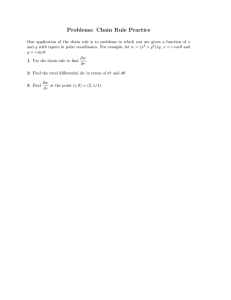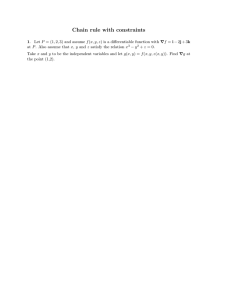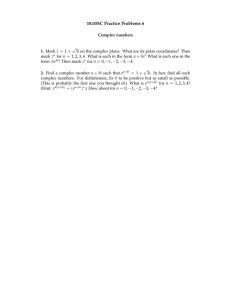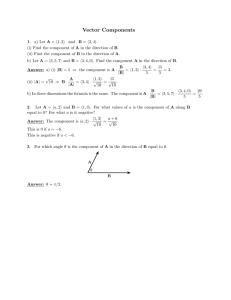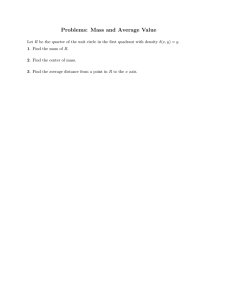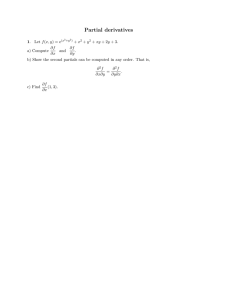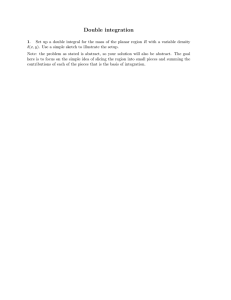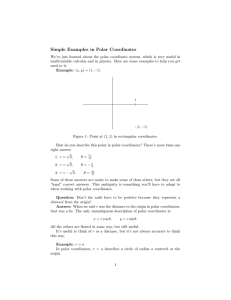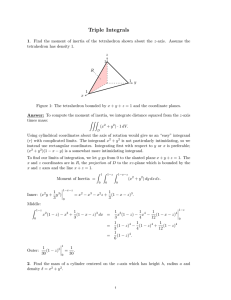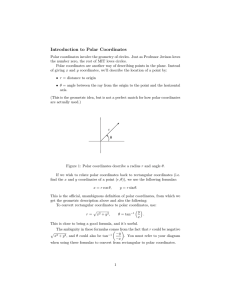Document 13739980
advertisement
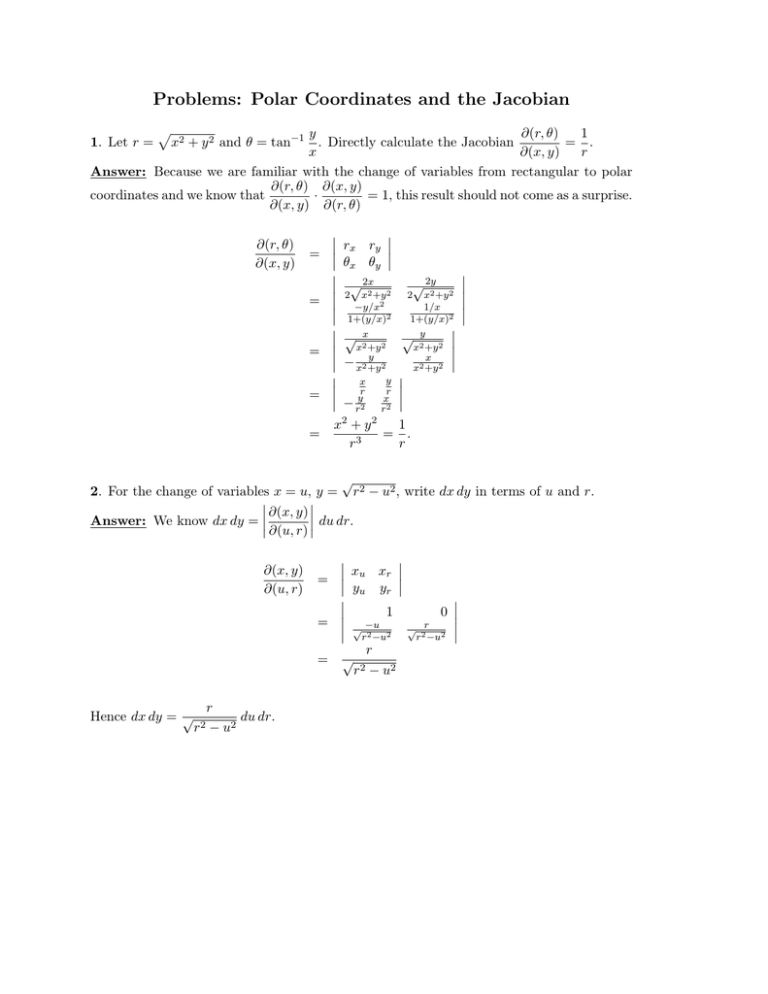
Problems: Polar Coordinates and the Jacobian y ∂(r, θ) 1 = . x 2 + y 2 and θ = tan−1 . Directly calculate the Jacobian x ∂(x, y) r Answer: Because we are familiar with the change of variables from rectangular to polar ∂(r, θ) ∂(x, y) coordinates and we know that · = 1, this result should not come as a surprise. ∂(x, y) ∂(r, θ) 1. Let r = ∂(r, θ) r r = x y θx θy ∂(x, y) √ 2x x2 +y 2 −y/x2 1+(y/x)2 2 = x x2 +y 2 − 2y 2 x +y y x r r y − 2 x2 r r x2 + y 2 √ = = = r3 √ 2y x2 +y 2 1/x 1+(y/x)2 √ y x2 +y 2 x x2 +y 2 2 1 = . r √ 2. For the change of variables x = u, y = r2 − u2 , write dx dy in terms of u and r. ∂(x, y) Answer: We know dx dy = du dr. ∂(u, r) ∂(x, y) x xr = u yu yr ∂(u, r) = = Hence dx dy = √ r du dr. r2 − u2 1 √ −u r2 −u2 r √ 2 r − u2 0 √ r r2 −u2 MIT OpenCourseWare http://ocw.mit.edu 18.02SC Multivariable Calculus Fall 2010 For information about citing these materials or our Terms of Use, visit: http://ocw.mit.edu/terms.
